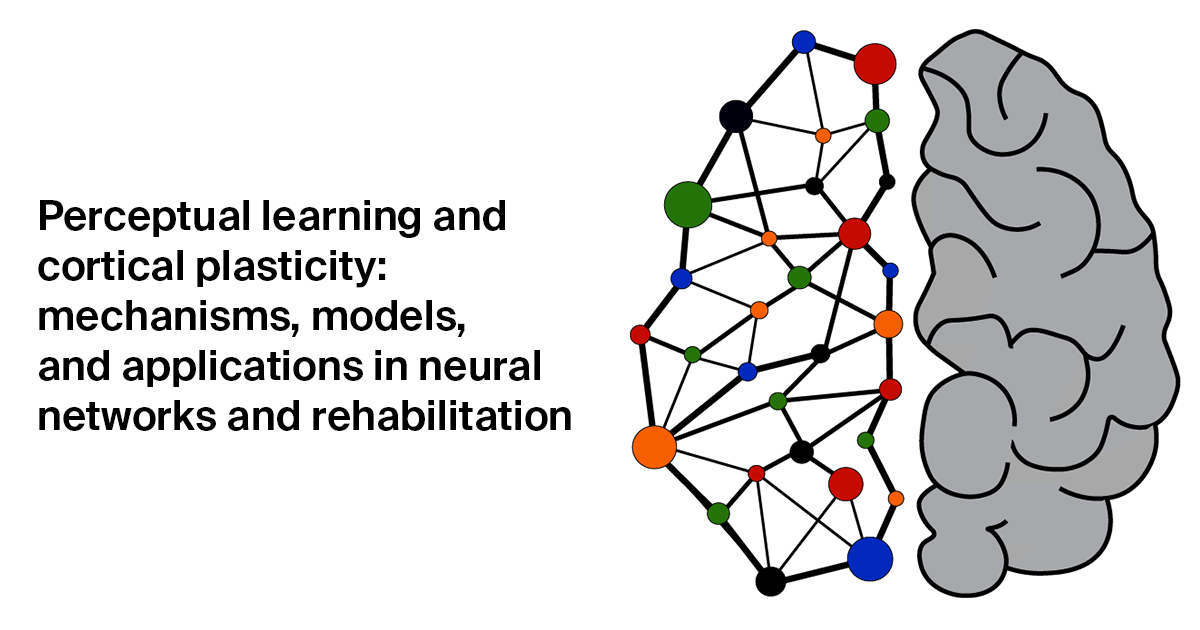- 2.8Impact Factor
- 5.6CiteScore
- 17 daysTime to First Decision
Perceptual Learning and Cortical Plasticity
This special issue belongs to the section “Behavioral Neuroscience“.
Special Issue Information
Dear Colleagues,
Perceptual learning, the process through which experience refines sensory processing, is essential for our adaptation to dynamic environmental demands. This Special Issue on Perceptual Learning and Cortical Plasticity seeks to bring together a diverse array of contributions that investigate the mechanisms driving cortical plasticity and their critical role in perceptual learning. By incorporating a variety of perspectives, we aim to advance our understanding of how experience-driven changes influence neural function across cortical regions and sensory modalities.
We welcome submissions that examine the cellular, synaptic, and circuit-level foundations of plasticity, including studies of synaptic remodeling such as strengthening, weakening, and reorganization in response to perceptual tasks. Contributions may include research on structural and functional plasticity revealed through advanced methodologies such as imaging, electrophysiology, or molecular analyses. Comparative studies across model organisms that provide insights into adaptations in sensory learning, as well as multimodal approaches integrating neurophysiological, behavioral, and computational techniques, are encouraged. Additionally, we invite investigations into differences between developmental and adult plasticity, focusing on critical period dynamics and the brain’s capacity for lifelong adaptation.
We aim to emphasize the wider significance of perceptual learning and cortical plasticity by encouraging studies that explore their applications, including neural network models, rehabilitation strategies, and interventions to enhance sensory and cognitive functions. Additionally, we welcome research exploring the influence of neuromodulation and sensory context on plasticity, as well as studies that integrate theoretical and experimental approaches to provide deeper insights into these mechanisms.
Dr. Mario Trevino
Guest Editor
Manuscript Submission Information
Manuscripts should be submitted online at www.mdpi.com by registering and logging in to this website. Once you are registered, click here to go to the submission form. Manuscripts can be submitted until the deadline. All submissions that pass pre-check are peer-reviewed. Accepted papers will be published continuously in the journal (as soon as accepted) and will be listed together on the special issue website. Research articles, review articles as well as short communications are invited. For planned papers, a title and short abstract (about 250 words) can be sent to the Editorial Office for assessment.
Submitted manuscripts should not have been published previously, nor be under consideration for publication elsewhere (except conference proceedings papers). All manuscripts are thoroughly refereed through a single-blind peer-review process. A guide for authors and other relevant information for submission of manuscripts is available on the Instructions for Authors page. Brain Sciences is an international peer-reviewed open access monthly journal published by MDPI.
Please visit the Instructions for Authors page before submitting a manuscript. The Article Processing Charge (APC) for publication in this open access journal is 2200 CHF (Swiss Francs). Submitted papers should be well formatted and use good English. Authors may use MDPI's English editing service prior to publication or during author revisions.
Keywords
- perceptual learning
- cortical plasticity
- synaptic plasticity
- neural network models
- sensory modalities
- neurophysiology
- structural plasticity
- behavioral neuroscience
- rehabilitation neuroscience
- experience-dependent plasticity

Benefits of Publishing in a Special Issue
- Ease of navigation: Grouping papers by topic helps scholars navigate broad scope journals more efficiently.
- Greater discoverability: Special Issues support the reach and impact of scientific research. Articles in Special Issues are more discoverable and cited more frequently.
- Expansion of research network: Special Issues facilitate connections among authors, fostering scientific collaborations.
- External promotion: Articles in Special Issues are often promoted through the journal's social media, increasing their visibility.
- e-Book format: Special Issues with more than 10 articles can be published as dedicated e-books, ensuring wide and rapid dissemination.

